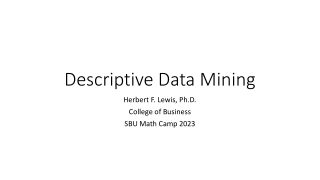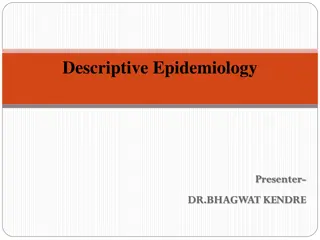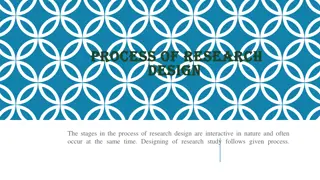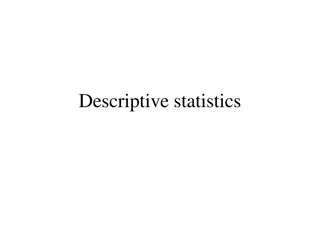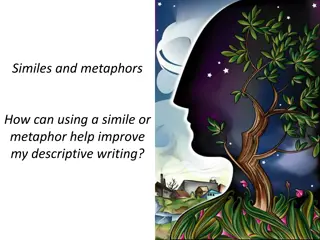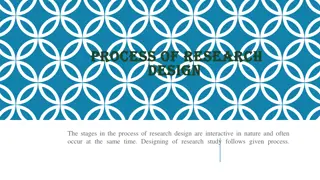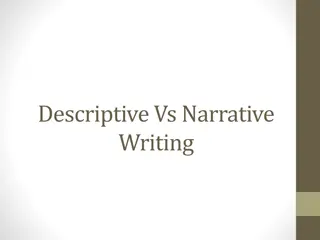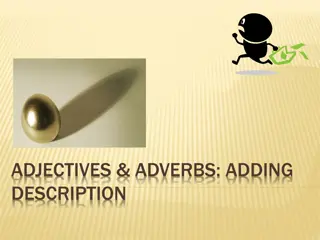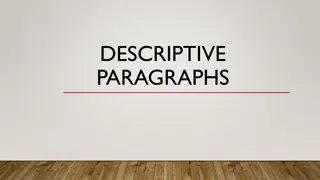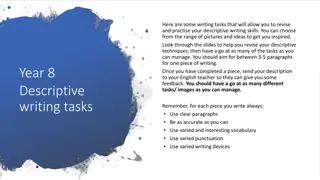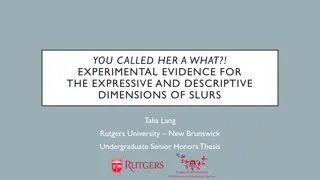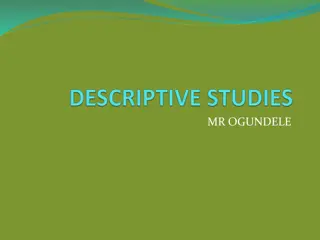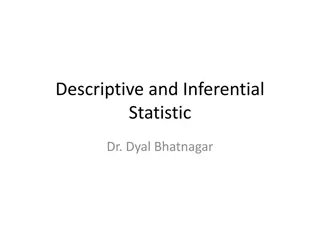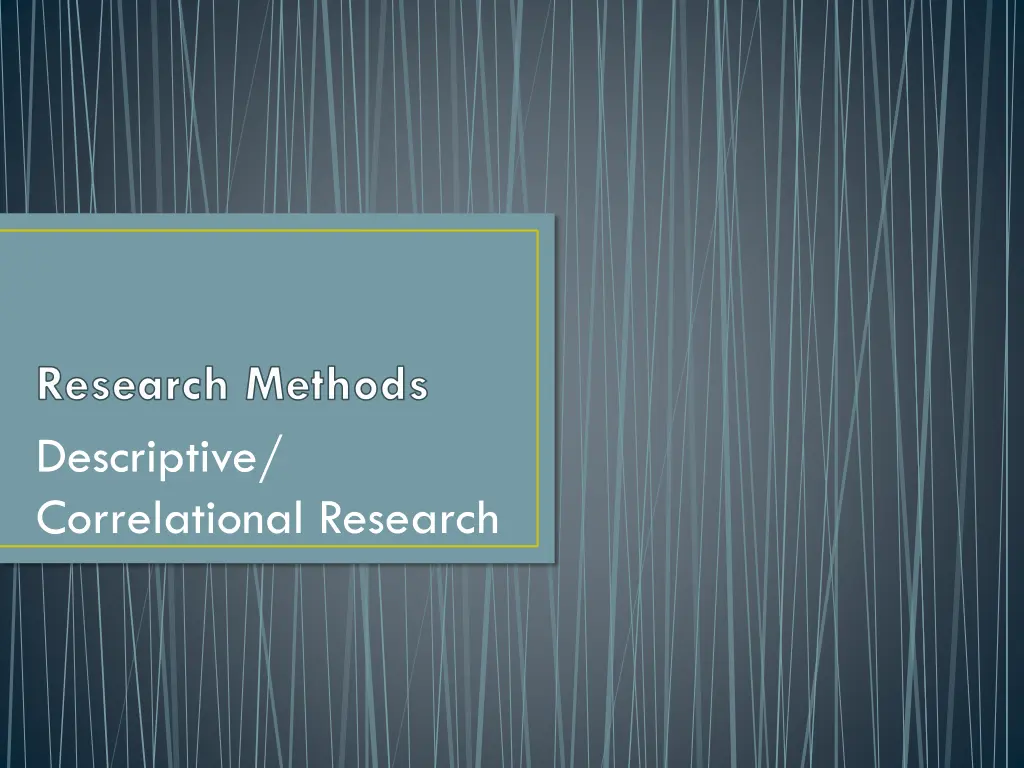
Understanding Different Research Methods in Psychology
Explore descriptive and correlational research methods, including the ability to see if variables are linked, the concepts of positive vs. negative correlation, strength of correlation coefficients, distinguishing prediction vs. causation, naturalistic observation, case study analysis, and the use of surveys in psychological research. Discover the strengths and weaknesses of each method and how they contribute to our understanding of human behavior.
Download Presentation

Please find below an Image/Link to download the presentation.
The content on the website is provided AS IS for your information and personal use only. It may not be sold, licensed, or shared on other websites without obtaining consent from the author. If you encounter any issues during the download, it is possible that the publisher has removed the file from their server.
You are allowed to download the files provided on this website for personal or commercial use, subject to the condition that they are used lawfully. All files are the property of their respective owners.
The content on the website is provided AS IS for your information and personal use only. It may not be sold, licensed, or shared on other websites without obtaining consent from the author.
E N D
Presentation Transcript
Research Methods Descriptive/ Correlational Research
-permits researchers to see if variables linked -cannot manipulate variables
Correlation: Positive Vs. Negative Positive correlation- 2 variables co-vary in the same direction Negative correlation-2 variables co-vary in the opposite direction
Correlation: Strength Correlation coefficient- numerical index of degree of relationship between two variables Can vary between -1.00 and 1.00 Coefficient near 0 no relationship between variables Coefficient of -1.00 or 1.00 perfect one-to-one correspondence between variables
Correlation: Prediction vs. Causation As strength increases, the ability to predict one variable based on knowledge of the other variable increases CANNOT tell whether a cause and effect relationship exists Third variable problem
Naturalistic Observation Careful observation of behavior without intervening directly with subjects Ex. Jane Goodall Strengths: Allows study of behaviors under conditions that are less artificial Good starting point when little is known about behavior being studied Can be used to study animal behavior. Why is this important? Positive Reactivity- when subjects behavior altered by presence of observer
Case Study In depth investigation of an individual subject Case study research- analyze a collection of case studies to look for patterns that permit general conclusions Strengths: well suited for investigating phenomena Provide real life illustrations that bolster hypotheses/theories Weaknesses: very subjective Easy for researcher to see what they expect to see
Survey Use questionnaires/interviews to gather information about specific aspects of participants background, attitudes, beliefs, behavior Strengths: can obtain information not easily observed Easier to collect data on attitudes/opinions from large samples Weaknesses: dependent on self-report data Why is this a weakness?
Correlational/Descriptive Research Advantage: gives researchers a way to explore questions that cannot be examined experimentally Example? Disadvantage: cannot control events to isolate cause and effect
Evaluating Research Replication repetition of a study to see if earlier results are duplicated Major strength of empirical approach = scientists work to reconcile/explain conflicting results Meta-analysis- combines statistical results of many studies of same question Yields estimate of size and consistency of a variable s effect
Samples & Sampling Bias Sample-collection of subjects selected for observation in an empirical study Population-much larger collection of animals/people that researchers want to generalize about Sampling bias-occurs when the sample is not representative of the population
Placebo Effects What is a placebo? Substance that resembles a drug but has no actual pharmacological effect Placebo Effect-when participant expectations lead them to experience some change even though they receive empty, fake, ineffectual treatment
Problems with Self-Report Data Social Desirability Bias- tendency to give socially approved answers to questions Misunderstanding of items Memory errors Tendency to either agree/disagree with nearly everything Halo effect- overall evaluation of a person, object, institution spills over and influences specific ratings
Experimenter Bias When researchers expectations/preferences about the outcome of a study influence the results obtained Double blind procedure-research strategy neither subjects or experimenters know which subjects are in the experimental or control groups
Ethical Issues in Research Deception: Arguments against: inherently immoral Psychology may undermine individuals trust in others Procedures distressful for people not forewarned Arguments for: many important issues could not be investigated if scientists were not permitted to mislead Most research deceptions are white lies not likely to harm Evidence does not support idea that it undermines trust in others or their respect for psychological/scientific research Benefits are worth the costs
Ethical Issues in Research Animal Research Reasons for using animals: want to know more about behavior of a specific type of animal Want to identify general laws of behavior that apply to animals and humans Can be exposed to treatments that would be unacceptable with humans Reality: few studies involve animals Few subject animals to harmful/painful manipulations Strict regulations exist that control how animals can be used for research
Guidelines for Research with Humans Voluntary & allowed to withdraw Not subjected to harmful/dangerous treatment Debriefing if deception is necessary Right to privacy should not be compromised
Guidelines for Working with Animals Harmful/painful procedures cannot be justified unless potential benefits are substantial Animals are entitled to decent living conditions


